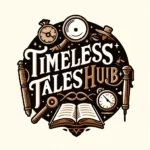A Key to Uncle Tom’s Cabin by Harriet Beecher Stowe – A Playful and Ironic Journey Through the Masterpiece
Ah, A Key to Uncle Tom’s Cabin! Where Harriet Beecher Stowe, in a fit of literary exuberance and moral urgency, decided to bless us with a companion volume to her groundbreaking novel. This work is like the secret decoder ring of the 19th century, revealing the hidden messages, truths, and real-life inspirations behind the fictionalized drama of Uncle Tom’s Cabin. Imagine a juicy behind-the-scenes gossip session, but instead of Hollywood starlets, we get antebellum characters and abolitionist fervor. So, buckle up, dear reader, and let’s dive into the delightful intricacies of this essential tome, with a playful twist.
1. The Prolific Pen of Harriet Beecher Stowe
First, let’s tip our hat to Stowe herself. This woman was not content with simply shaking the world with Uncle Tom’s Cabin; she had to come back and stir the pot further with A Key to Uncle Tom’s Cabin. In an age where the pen was mightier than the sword (or at least mightier than the teacup), Stowe wielded her quill like a fencing champion. She aimed to silence critics, bolster her narrative, and essentially shout, “I TOLD YOU SO!” from the rooftops.
2. Fact Versus Fiction
The book operates as a kind of annotated bibliography meets exposé. Stowe meticulously dissects her own novel, matching fictional events and characters with real-life counterparts. Think of it as a Victorian-era version of “Based on a True Story” captions in films. For every heart-wrenching scene in Uncle Tom’s Cabin, Stowe provides documented evidence of similar atrocities. She’s the myth-buster of her time, debunking the naysayers who dared to call her work an exaggeration.
3. Characters Come to Life
In A Key to Uncle Tom’s Cabin, we meet the real faces behind the fictional names. For instance, the gentle and pious Uncle Tom has his roots in Josiah Henson, an escaped slave who became a preacher and a leader in the Canadian anti-slavery movement. It’s like discovering your favorite superhero was based on a real person all along! Stowe introduces us to numerous such figures, blending history with her narrative flair. Each real-life story she uncovers is like a little Easter egg, revealing the depth of her research and the authenticity of her characters.
4. The Villains of the Piece
Stowe doesn’t shy away from casting her villains in the harsh light of reality either. The cruel Simon Legree, the archetypal bad guy, isn’t just a figment of Stowe’s imagination. He’s a composite of several wicked slave owners whose atrocities she recorded. These revelations are both chilling and enlightening, showcasing Stowe’s commitment to truth-telling. Imagine peeling back the layers of a sinister onion, only to find even more pungent truths within.
5. Legal and Historical Contexts
Stowe dives into the nitty-gritty of the legal framework that allowed slavery to thrive. She provides excerpts from laws, court cases, and public records that detail the systemic cruelty and exploitation. It’s like reading the instruction manual for a horrendous machine, and suddenly all the pieces of the puzzle fall into place. Stowe’s analysis of legal documents is both a damning indictment of the system and a masterclass in how to weaponize research for social justice.
6. Eyewitness Accounts
The book is peppered with firsthand testimonies from former slaves and abolitionists. These accounts add a layer of veracity and urgency to Stowe’s narrative. It’s like having a cadre of reliable witnesses step forward to back up your wildest claims. These voices from the past reach out to the reader, bridging the gap between history and the present, and making the horrors of slavery viscerally real.
7. Stowe’s Unapologetic Stance
Stowe’s tone throughout A Key to Uncle Tom’s Cabin is one of righteous indignation mixed with a touch of “I told you so.” She’s not here to play nice; she’s here to set the record straight. Her arguments are robust, her evidence is irrefutable, and her passion is palpable. She doesn’t just defend her work; she champions the cause of abolition with an ironclad resolve. Her writing has the vigor of a closing argument in a courtroom drama, leaving no doubt in the reader’s mind about the justice of her cause.

8. A Treasure Trove for Scholars and Activists
For those interested in the history of abolition, A Key to Uncle Tom’s Cabin is an invaluable resource. It’s a treasure trove of historical data, personal stories, and incisive commentary. It’s like finding a secret library filled with the diaries and letters of those who lived through the era. This book not only bolsters the arguments made in Uncle Tom’s Cabin but also serves as a standalone testament to the horrors of slavery and the resilience of those who fought against it.
9. Stowe’s Enduring Legacy
In writing A Key to Uncle Tom’s Cabin, Harriet Beecher Stowe cemented her legacy as not just a novelist but as a historian and activist. Her work transcends the realm of fiction, entering the annals of history as a powerful weapon against oppression. Stowe’s key doesn’t just unlock the door to her novel; it unlocks the door to a deeper understanding of America’s past, urging us to learn from it and strive for a more just future.
In summary, A Key to Uncle Tom’s Cabin is a playful yet poignant exploration of the real-life inspirations behind one of the most influential novels in American literature. Harriet Beecher Stowe masterfully blends fact and fiction, offering readers a compelling narrative filled with historical insights, moral urgency, and a touch of ironic wit. So, dear reader, whether you’re a scholar, a history buff, or simply someone who loves a good story, this key is one you’ll want to turn. Unlock it and step into a world where literature and history collide with explosive results.


